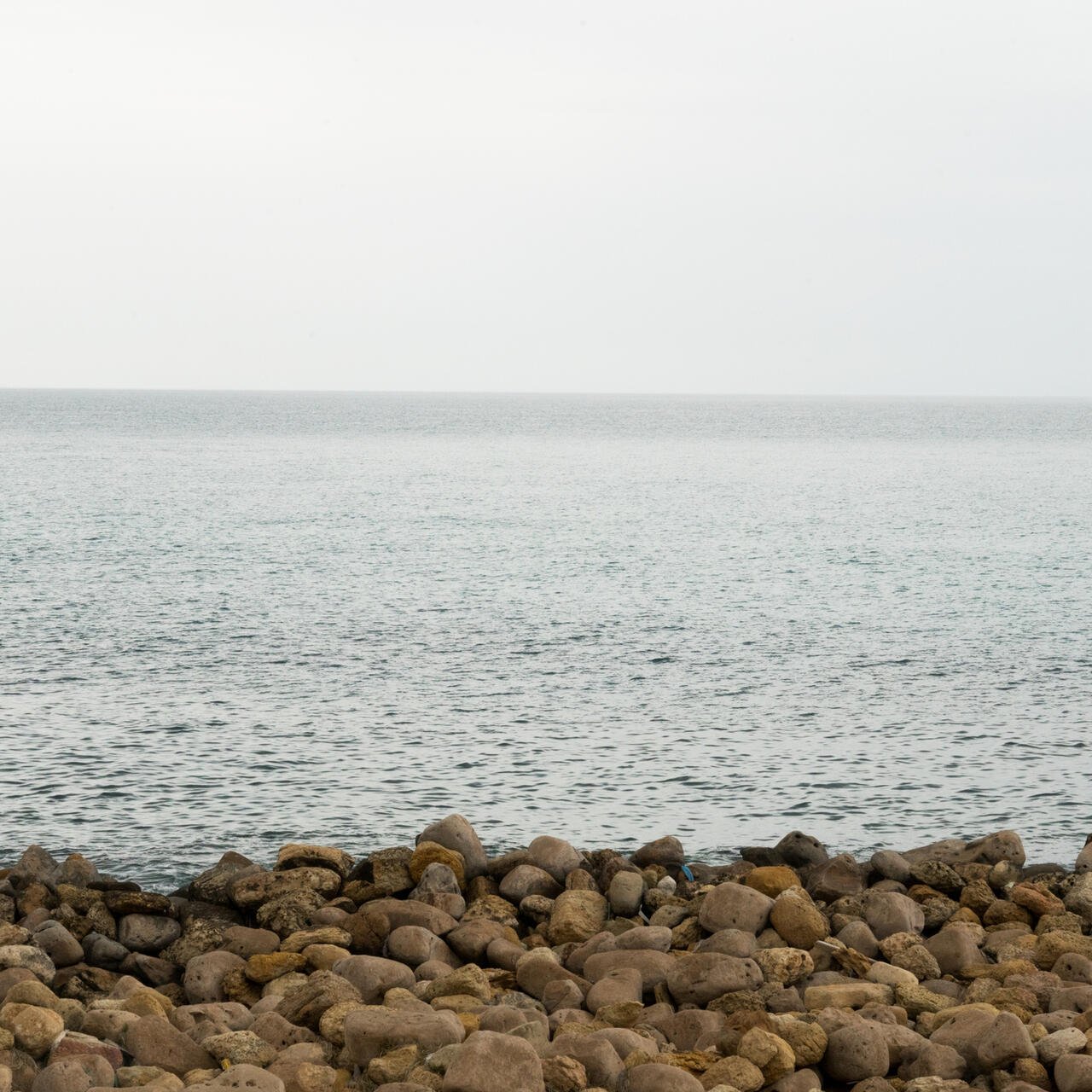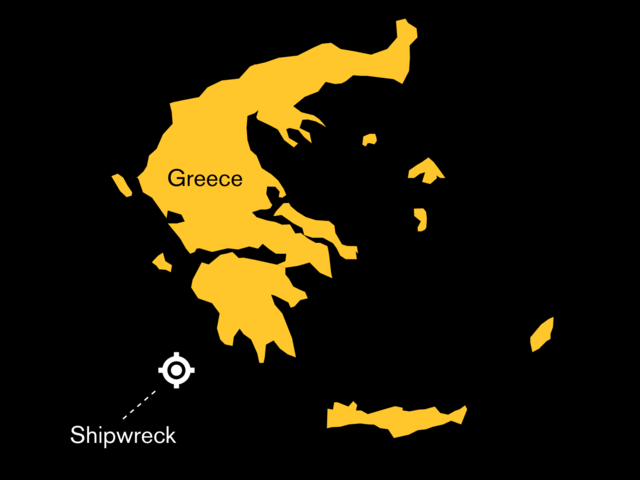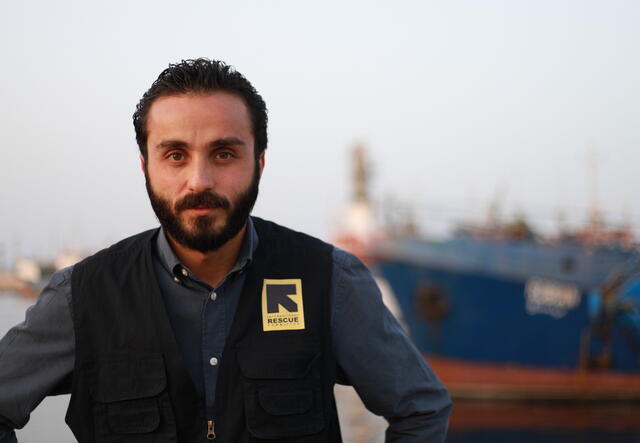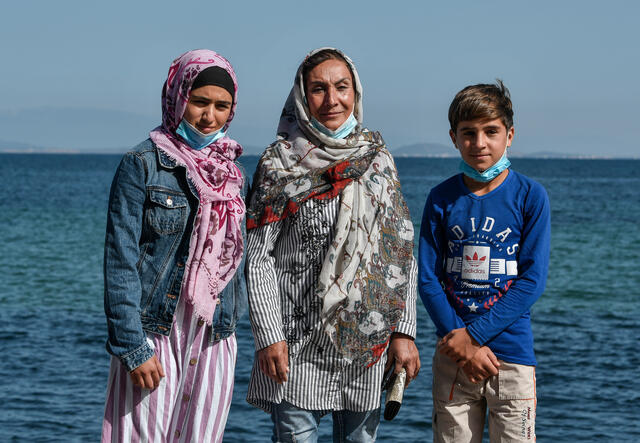
Greek shipwreck: what you need to know one year later
Find out why people seeking protection are forced to take a dangerous journey.

Find out why people seeking protection are forced to take a dangerous journey.
On June 14, 2023, a ship capsized in the Mediterranean Sea, sinking off the coast of Greece. Despite a rescue mission that saved over 100 people, more than 600 lives were lost.
The International Rescue Committee (IRC) is calling on European states to provide safe routes for people on the move and to press for an independent investigation into the catastrophe.
Each year thousands of people make a dangerous voyage across the Mediterranean Sea. It’s all too common for these journeys to end tragically—with deaths in the Mediterranean Sea reaching a six year high in 2023. Almost 30,000 have gone missing or lost their lives since 2014.
Learn more about the shipwreck in Greek waters and what world leaders can do to address the humanitarian crises in the Mediterranean Sea.
In the early hours of June 14, 2023, a fishing boat with an estimated 750 people onboard sank approximately 47 nautical miles off the coast of Pylos, Greece. The vessel left Libya and was en route to Italy.
The shipwreck was one of the most devastating incidents to take place in the Mediterranean Sea in recent years.

Asylum seekers fromPakistan, Egypt,Syria,Afghanistan and Palestine were onboard the ship. According to international and European Union law, asylum seekers must arrive in an EU country before they can apply for asylum there.
Last month, a Greek court dismissed a case against nine survivors who were accused of a number of serious charges, including smuggling and causing the shipwreck. They had been detained for 11 months at the time of trial.
Globally, the number of people displaced has reached a staggering high of 120 million. Many of the people that attempt to make the desperate trek across the Mediterranean Sea have been driven from their homes by rising food insecurity, unemployment, and the impact of climate change, with some fleeing violence, conflict or persecution in countries like Afghanistan, Syria, Sudan or Somalia.
In the first six months of 2024, more than 15,000 asylum seekers have reached Greece by crossing the Mediterranean Sea.
A common route taken by many asylum seekers—called the Central Mediterranean Route—stretches from sub-Saharan Africa to North Africa, including Libya, and across the Mediterranean Sea to Europe. It is one of the world’s most dangerous migration routes.
In Libya, many are exposed to horrific levels of violence, including kidnapping, torture and extortion. Often people who arrive in Libya are also held in detention centers, where the U.N. says that conditions amount to “crimes against humanity”.
“I was scared when they took us from our boat in the middle of the sea, but when I knew we were going back to Libya, I remembered all the bad things that happened to me in the detention center, so I jumped in the water… I can’t go back there,” says Fnan*, a 26-year-old man from Eritrea whose boat was intercepted by the Libyan Coast Guard as he attempted to cross the Mediterranean Sea.

The Central Mediterranean Sea is one of the world’s deadliest migration routes.
On April 18, 2015, the Mediterranean’s deadliest known shipwreck occurred when an overcrowded fishing boat collided off Libya with a freighter that was trying to come to its rescue. As many as 1,100 people were on board; only 28 people survived.
In February 2023, at least 94 people died when a boat carrying 200 migrants amidst harsh weather conditions sank while trying to land on the coast of Southern Italy.
These are just a small selection of a long series of preventable tragedies. Asylum seekers are only forced to take the dangerous journey across the Mediterranean because there are not enough safe and legal routes.
Through the first half of 2024, some 750 people are known to be missing after attempting to cross the Central Mediterranean—but the real number is likely to be far higher as many deaths are not recorded. Overall, the International Organization of Migration has tallied 30,000 missing migrants in the Mediterranean since 2014.
In addition to the deadly Central Mediterranean route, the Western Mediterranean route is used by migrants seeking to reach Spain from Morocco or Algeria. The Eastern Mediterranean route is mainly used by Syrian, Iraqi, Afghan and other non-African migrants who go first to Turkey and then try to reach Greece or other European destinations.

Unfortunately, too many governments and politicians mistakenly believe that cruelty and inhumanity are the best options for establishing order at their borders. In reality, these solutions push people into the hands of smugglers to get past checkpoints, across borders and ultimately onto boats.
“Europe’s approach to migration and asylum is failing,” says Harlem Désir, IRC senior vice president, Europe. “The true crisis is not that people are asking for refuge, but the glaring lack of political will to provide it.”
“We’re calling on EU leaders to urgently shift their focus from keeping people from reaching Europe at all costs, towards welcoming them with dignity and respect,” adds Marta Welander, IRC EU Advocacy Director.
Saving lives is not a crime—states must scale up search and rescue efforts, as well as coordinating with humanitarian organizations also working to save lives at sea.
They should also act in solidarity with countries of first arrival, expand legal pathways for people seeking protection, treat people who have crossed the Mediterranean with dignity and uphold the right to asylum in Europe.
“It’s imperative that EU leaders take urgent, principled action to prevent more suffering at Europe’s borders,” said Imogen Sudbery, the IRC’s senior director of Europe advocacy. “If they fail to do so, the Mediterranean will not just become a graveyard for more people seeking protection, but for its own values of human rights, dignity and equality.”
The Greek government has opened an investigation into the shipwreck but serious concerns have been raised about its independence and transparency.
The IRC continues to call on the EU and its member states to launch a full and transparent investigation of the shipwreck.
It’s not only essential that the EU presses for an independent investigation into this shipwreck, but that it takes immediate steps to ensure that such a tragedy will not happen again,” says Welander.
The IRC provides lifesaving medical services, cash and other essential support to vulnerable people in their countries of origin, transit and destination.
Since 2016 the IRC has been present in Libya, providing life-saving health and protection services, strengthening the country’s health system and building the capacity of Libyan youth in peacebuilding and governance initiatives.
We have also been working in Italy since 2017, providing refugees, asylum seekers and other migrants with access to information, protection, legal assistance, and psycho-social support while also working on the early identification of trafficking survivors.
Seeking asylum is a human right. Share this post to raise awareness of the dangers that asylum seekers face when crossing the Mediterranean Sea.
*Names changed for privacy.